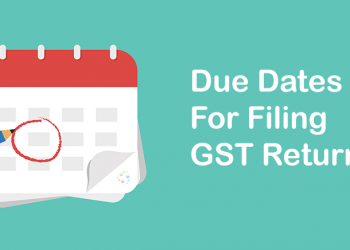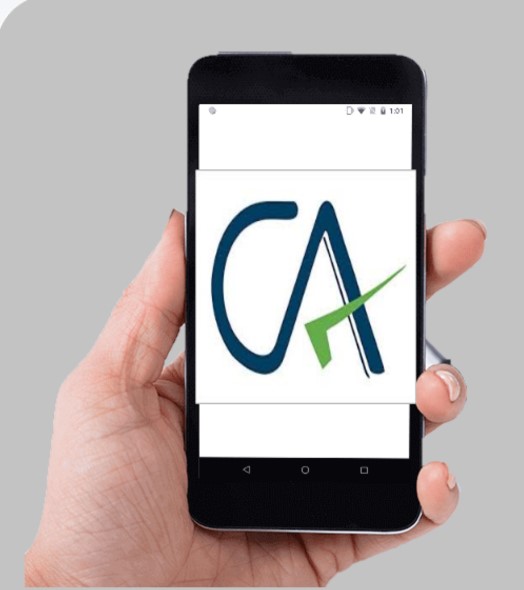Introduction
Long-term provisions represent liabilities of uncertain timing or amount that are expected to be settled beyond the next 12 months. These provisions can include obligations such as employee benefits, warranties, legal claims, and environmental liabilities. Conducting a statutory audit of long-term provisions ensures that these liabilities are accurately recorded, measured, and disclosed in compliance with Indian laws and accounting standards. This guide provides detailed directions on how to audit long-term provisions, addressing common queries and confusions with practical examples.
Key Regulations and Compliance
- Companies Act, 2013:
- Section 129: Mandates the preparation of financial statements in compliance with accounting standards.
- Schedule III: Provides the format and requirements for presenting financial statements, including long-term provisions.
- Sections 128 and 133: Govern the maintenance of books of accounts and compliance with accounting standards notified by the Ministry of Corporate Affairs (MCA).
- Indian Accounting Standards (Ind AS):
- Ind AS 1: Presentation of Financial Statements requires clear distinction and disclosure of non-current liabilities, including long-term provisions.
- Ind AS 19: Employee Benefits covers the recognition, measurement, and disclosure of long-term employee benefit obligations.
- Ind AS 37: Provisions, Contingent Liabilities, and Contingent Assets provide guidelines on recognizing, measuring, and disclosing provisions.
- Income Tax Act, 1961:
- Governs the treatment of certain long-term provisions and related disclosures, particularly concerning employee benefits.
- SEBI Regulations:
- SEBI (Listing Obligations and Disclosure Requirements) Regulations, 2015 mandate specific disclosures for listed companies.
Detailed Audit Procedures
1. Understanding the Nature and Basis of Long-Term Provisions
Objective: To ensure the provisions are genuine and accurately recognized.
- Review of Documentation: Obtain and review documentation supporting the recognition of long-term provisions, such as legal claims, employee benefit plans, warranty policies, and environmental obligations.
- Example: A company recognizes a provision for warranty claims. Review the warranty policy, historical claim data, and any agreements with customers.
- Management’s Estimates: Understand the basis for management’s estimates in recognizing provisions. This involves reviewing assumptions, calculations, and any external expert reports.
- Example: For a provision related to environmental cleanup, review the environmental assessment report prepared by external experts.
2. Verification of Regulatory Compliance
Objective: To ensure compliance with statutory and regulatory provisions.
- Compliance with Ind AS 37: Verify that the recognition and measurement of provisions comply with Ind AS 37. This includes ensuring provisions are recognized only when there is a present obligation, a probable outflow of resources, and a reliable estimate.
- Example: A company recognizes a provision for litigation. Ensure there is a present legal obligation and that the likelihood of an outflow is more probable than not.
- Compliance with Ind AS 19: For employee benefits, ensure compliance with Ind AS 19 regarding the recognition, measurement, and disclosure of long-term employee benefits such as gratuity and pension obligations.
- Example: Verify the actuarial valuation report for employee benefit obligations to ensure accurate calculation and compliance with Ind AS 19.
3. Examination of Specific Types of Provisions
Objective: To ensure accurate recognition, measurement, and disclosure of different types of provisions.
- Employee Benefits:
- Gratuity and Pension: Review the actuarial valuation reports for long-term employee benefits. Verify assumptions such as discount rates, salary escalation, and employee turnover rates.
- Example: A company has a defined benefit plan for its employees. Verify the actuarial valuation, ensuring the assumptions are reasonable and compliant with Ind AS 19.
- Leave Encashment: Ensure provisions for long-term leave encashment are accurately calculated and disclosed.
- Example: Review the leave policy and historical data on leave encashment to verify the provision’s accuracy.
- Warranty Provisions:
- Historical Data: Review historical data on warranty claims to assess the reasonableness of the provision.
- Example: A manufacturing company provides a five-year warranty on its products. Review past warranty claims data to ensure the provision aligns with historical trends.
- Future Estimates: Evaluate the assumptions and estimates used to calculate the provision for future warranty claims.
- Legal Claims and Environmental Obligations:
- Legal Claims: Review the status of ongoing legal cases, correspondence with legal advisors, and the likelihood of an unfavorable outcome.
- Example: A company is involved in a lawsuit. Review legal opinions and case status to assess the provision for potential settlement costs.
- Environmental Obligations: Verify the recognition and measurement of provisions for environmental cleanup and restoration. Ensure compliance with regulatory requirements.
- Example: For a mining company, review environmental assessment reports and regulatory requirements to ensure the provision for site restoration is accurate.
4. Assessment of Measurement Basis
Objective: To ensure provisions are measured reliably.
- Present Value Calculation: For long-term provisions, verify that the present value of the obligation is calculated correctly, considering appropriate discount rates.
- Example: A company recognizes a provision for site restoration to be carried out in 10 years. Verify the discount rate used and the present value calculation.
- Revisions and Updates: Review any changes in the measurement of provisions during the audit period. Ensure that changes are justified and properly documented.
- Example: A provision for warranty claims is adjusted based on new historical data. Verify the rationale for the adjustment and its impact on the financial statements.
5. Reconciliation and Confirmation
Objective: To ensure the accuracy of recorded amounts.
- Reconciliation: Reconcile the provision balances with supporting documentation and management’s calculations.
- Example: Reconcile the provision for long-term employee benefits with the actuarial valuation report and ensure consistency with the general ledger.
- External Confirmation: Where applicable, obtain external confirmations for provisions, such as legal confirmations for significant litigation provisions.
- Example: Obtain a confirmation from the company’s legal counsel regarding the status and expected outcome of significant legal cases.
6. Compliance with Disclosure Requirements
Objective: To ensure adequate disclosure in financial statements.
- Notes to Financial Statements: Verify that the financial statements include detailed notes explaining the nature, basis, and amounts of long-term provisions.
- Example: Ensure the notes to financial statements provide detailed disclosures about long-term employee benefit obligations, including key assumptions and sensitivity analysis.
- SEBI Requirements: For listed companies, ensure compliance with SEBI disclosure requirements for long-term provisions.
Practical Examples and Case Studies
Example 1: Provision for Long-Term Employee Benefits
- Scenario: A company has a defined benefit plan for its employees, including gratuity and pension obligations.
- Audit Approach: Review the actuarial valuation report, ensuring the assumptions such as discount rates, salary escalation, and employee turnover rates are reasonable. Verify compliance with Ind AS 19 and ensure adequate disclosure in the financial statements.
- Practical Insight: Compare the assumptions used in the actuarial valuation with industry benchmarks and historical data.
Example 2: Warranty Provisions
- Scenario: A manufacturing company provides a five-year warranty on its products and recognizes a provision for future warranty claims.
- Audit Approach: Review historical data on warranty claims, assess the reasonableness of management’s estimate, and verify the provision calculation. Ensure compliance with Ind AS 37 and appropriate disclosure in the financial statements.
- Practical Insight: Compare the warranty provision with actual claims over previous periods to assess the adequacy and accuracy of the provision.
Example 3: Legal Claims Provision
- Scenario: A company is involved in multiple legal disputes and has recognized provisions for potential settlements.
- Audit Approach: Review legal opinions, case status, and correspondence with legal advisors to assess the likelihood of an unfavorable outcome and the estimated settlement amounts. Verify compliance with Ind AS 37 and ensure proper disclosure.
- Practical Insight: Discuss with legal counsel to obtain updated information on the progress and likely outcome of significant legal cases.
Example 4: Environmental Provision
- Scenario: A mining company recognizes a provision for environmental cleanup and restoration.
- Audit Approach: Review environmental assessment reports, regulatory requirements, and management’s estimates for cleanup costs. Verify the present value calculation and ensure compliance with Ind AS 37. Ensure adequate disclosure in the financial statements.
- Practical Insight: Verify the assumptions used in estimating cleanup costs with industry standards and regulatory guidelines.
Common Queries and Areas of Confusion
- Classification between Current and Non-Current:
- Confusion: Correct classification of provisions due within the next 12 months as current liabilities.
- Resolution: Verify repayment schedules and ensure consistent classification as per agreements.
- Measurement of Provisions:
- Confusion: Determining the appropriate basis for measuring long-term provisions.
- Resolution: Ensure compliance with Ind AS 37 and review historical data and management estimates.
- Discount Rate for Present Value Calculation:
- Confusion: Choosing the appropriate discount rate for calculating the present value of long-term provisions.
- Resolution: Verify that the discount rate reflects the current market assessment of the time value of money and the risks specific to the liability.
- Actuarial Valuations:
- Confusion: Understanding and verifying actuarial valuations for long-term employee benefits.
- Resolution: Review actuarial reports and assumptions used, ensuring they are reasonable and compliant with Ind AS 19.
- Disclosure Requirements:
- Confusion: Adequate disclosure of long-term provisions in financial statements.
- Resolution: Verify detailed notes to financial statements and ensure compliance with SEBI and other regulatory requirements.
Conclusion
Auditing long-term provisions requires a thorough understanding of regulatory requirements, detailed examination of supporting documents, and verification of compliance with accounting standards. By following the detailed procedures outlined above, auditors can ensure that long-term provisions are accurately recorded, measured, and disclosed in the financial statements, providing stakeholders with a clear and accurate picture of the company’s financial obligations. Incorporating practical examples and case studies helps illustrate the application of audit procedures in real-world scenarios, making the audit process more interactive and informative.
Author
CA Sourabh Kothari (C.A., B.Com)
He is currently working as Partner – Risk and Transaction advisory with a renowned firm in Jaipur having experience in Internal Audit, IFC Audit, Business consultancy, Due Diligence and Management consultancy.
E-mail: Sourabh.kothari@jainshrimal.in | LinkedIn: Sourabh Kothari












